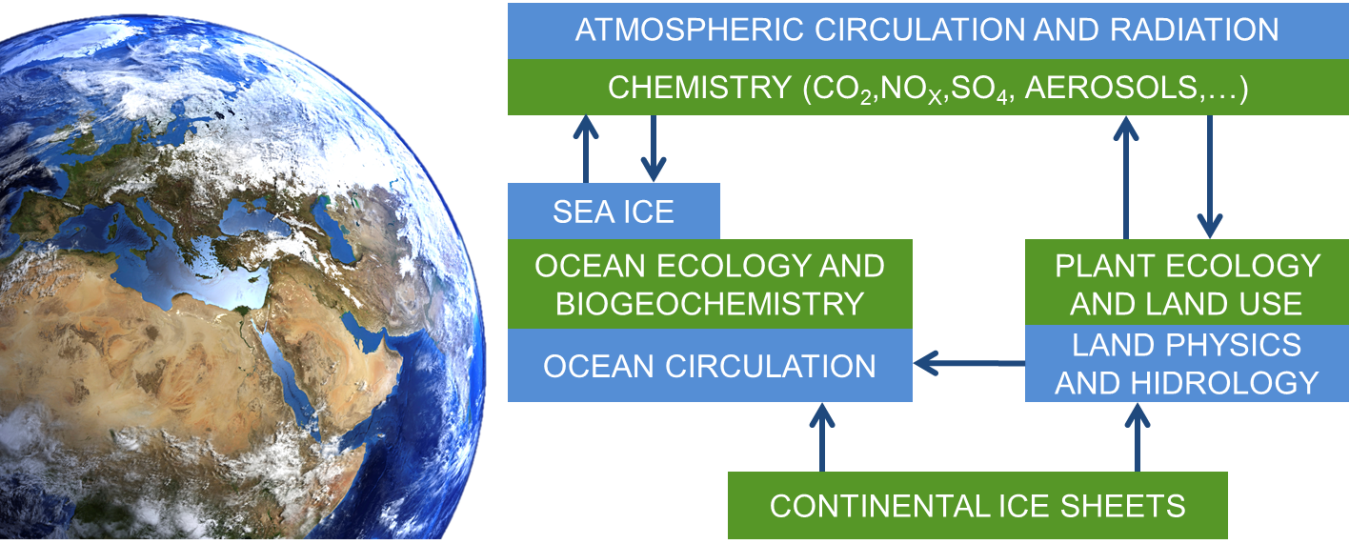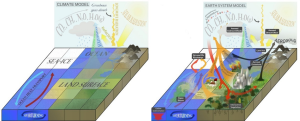 At a glance / Definitions / Definitions - Earth-System Modeling / Earth-System Modeling / Earth-System Modeling - At a glance
At a glance / Definitions / Definitions - Earth-System Modeling / Earth-System Modeling / Earth-System Modeling - At a glance
Earth system models (ESM) seek to simulate all relevant aspects of the Earth system. They include physical, chemical and biological processes, therefore reaching far beyond their predecessors, the global climate models (GCM), which just represented the physical atmospheric and oceanic processes.
In fact, the climate system is driven by more than the physical processes that have conventionally been modelled (such as winds, clouds, land surface, oceans and ice). The concentration of greenhouse gases and aerosols are not only affected by man-made emissions, as these are involved in physical reactions and interactions with the biological components of the Earth system, strongly linked to the climate system.

Basic structure of an Earth System Model: blue boxes represent the processes included in a climate model; green boxes represent the additional components that may be included in an Earth System Model.
At their core ESMs have the atmospheric and ocean components of a GCM however to this they add representations of the global carbon cycle, dynamic vegetation, atmospheric chemistry, ocean bio-geo-chemistry and even continental ice sheets.

Key features of climate models and earth system models: Earth system models gain complexity by considering the biological and chemical processes that feedback into the physics of climate. Source: ©2013 Nature Education.
Instead of using predetermined inputs of atmospheric composition such as aerosols and greenhouse gases, an ESM can simulate how these components change over time in response to anthropogenic activity and changing climate conditions. Therefore, a changing climate will affect the concentration of greenhouse gases and aerosols which will in turn feedback on to the climate.
ESMs are therefore able to represent human influence on climate more completely, e.g. by deforestation and greenhouse gases emissions.
ESMs are composed by a set of equations describing atmospheric and oceanic circulation and thermodynamics, but also the biological and chemical processes that feedback on to the physics of climate, all solved for a number of locations in space that form a three-dimensional grid over the surface of the Earth and underneath the surface of the oceans
Merging all climate-relevant aspects together in a single model is computationally very demanding and time consuming. A highly efficient computational infra-structure is necessary to enable all these modules to communicate and work together efficiently.

National Supercomputer Centre’s director Patrick Norman in front of the “Triolith” supercomputer (Linköping University, Sweden). It has 25,600 processors and 409 teraflops of computing power. Photo by Göran Billeson.
